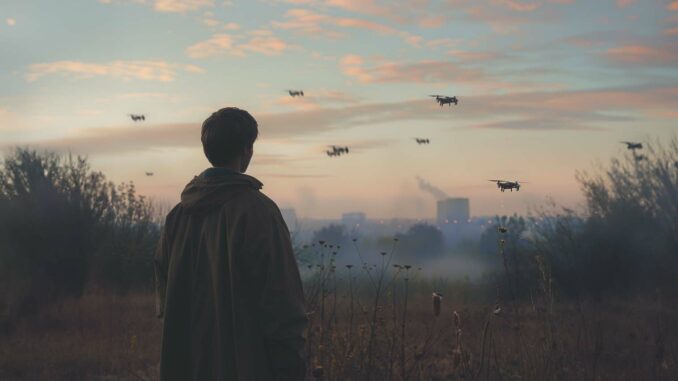
Ukrainian UAVs strike key targets in Moscow and St Petersburg, disrupting Russia’s war effort and energy infrastructure.
Ukraine’s strategic use of unmanned aerial vehicles (UAVs) to attack critical industrial facilities in Western Russia marks a turning point in the conflict between the two countries. These UAVs, capable of reaching targets 850 kilometers and 1,100 kilometers away, underline the evolution of modern warfare and the vulnerability of infrastructures to precise long-range attacks. The targets, carefully chosen for their importance to the Russian war effort, include oil refineries and fuel storage facilities, as well as factories producing special steels for tubed artillery and tanks.
The efficiency of Ukrainian UAVs
Ukrainian UAVs adopt a tactical approach, flying low and slow to avoid detection by Russian air defenses, especially at night. This strategy makes it difficult for Russia to effectively cover a wide corridor through which these attacks are carried out. Despite Russian claims of destroying several Ukrainian UAVs, the impact on key infrastructure and the disruption of fuel deliveries attest to the effectiveness of this tactic.

Consequences for the Russian war effort
The UAV attacks not only damaged Russia’s military and energy infrastructure, but also disrupted operations at airports serving the Moscow region. The impact extends beyond the military domain, affecting both the commercial and civilian markets through reduced fuel availability. The latter underlines the interdependence between the military and civil sectors in supporting the war effort.
Challenges for Russian air defense
Russia’s difficulty in effectively countering these UAVs, especially when operating at low altitude and low speed, highlights the limitations of current air defense systems in the face of asymmetric and innovative threats. The inability to protect strategic installations on Russian territory is a reminder of the importance of adapting defense strategies to the new realities of the battlefield.
Strategic implications
Ukrainian drone attacks against targets in Western Russia represent a significant escalation in the conflict, showing that Ukraine is capable of striking deep into enemy territory. These events highlight an evolution in warfare tactics, where UAVs are playing an increasing role in executing precise strikes against critical infrastructure. Such capabilities pose a strategic challenge for Russia, which must now factor the persistent threat of UAVs into its defense and logistics planning.
Successful attacks by Ukrainian UAVs on strategic targets in Western Russia reveal vulnerabilities in Russian infrastructure and air defense, while demonstrating the effectiveness of Ukrainian strategies. This development in the conflict underlines the growing importance of drone technologies in modern warfare, offering new capabilities for conducting offensive operations from a distance. The implications of these attacks go beyond immediate damage, affecting the Russian war effort and raising questions about the security and resilience of critical infrastructure in the face of long-range strikes.
War Wings Daily is an independant magazine.